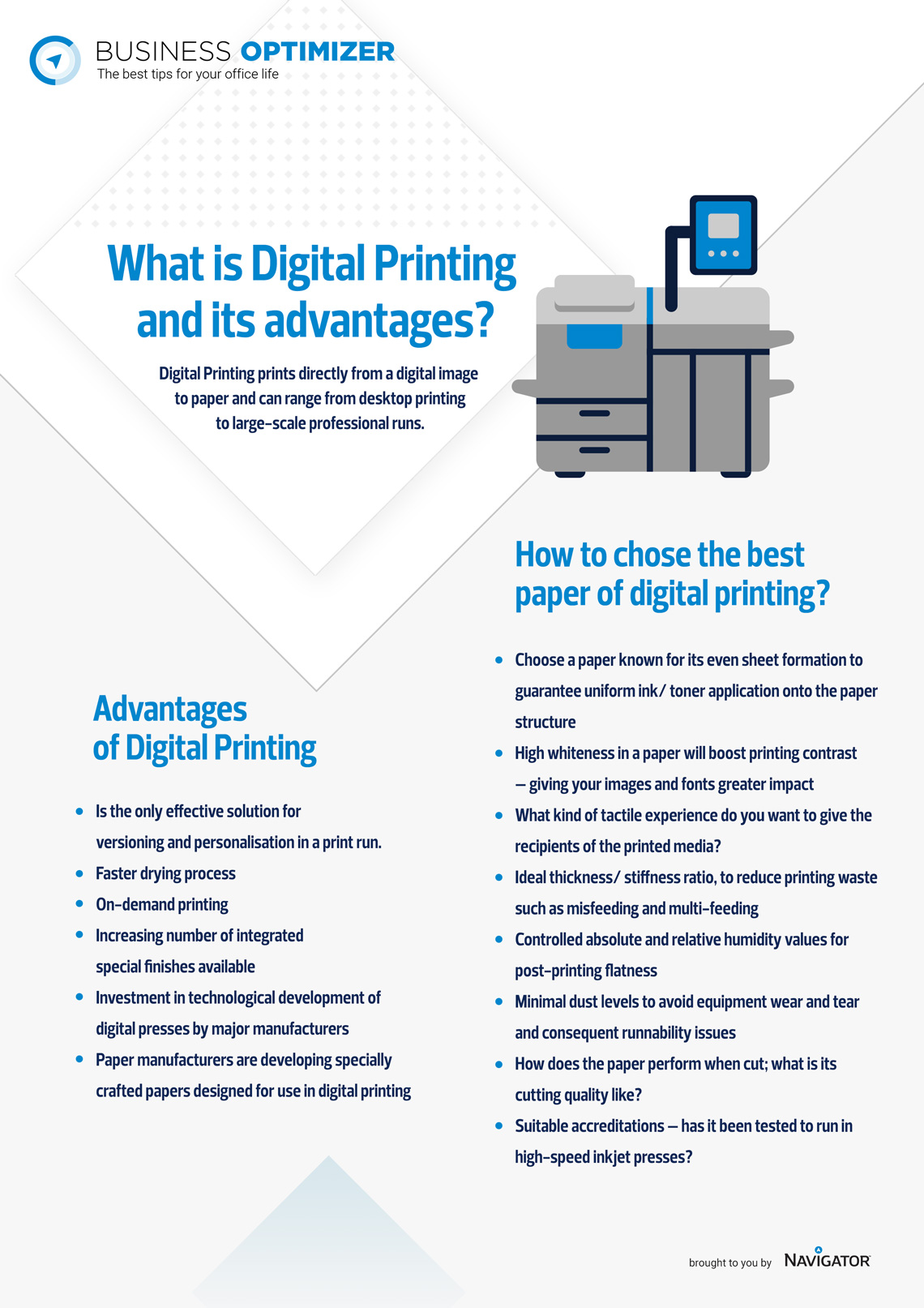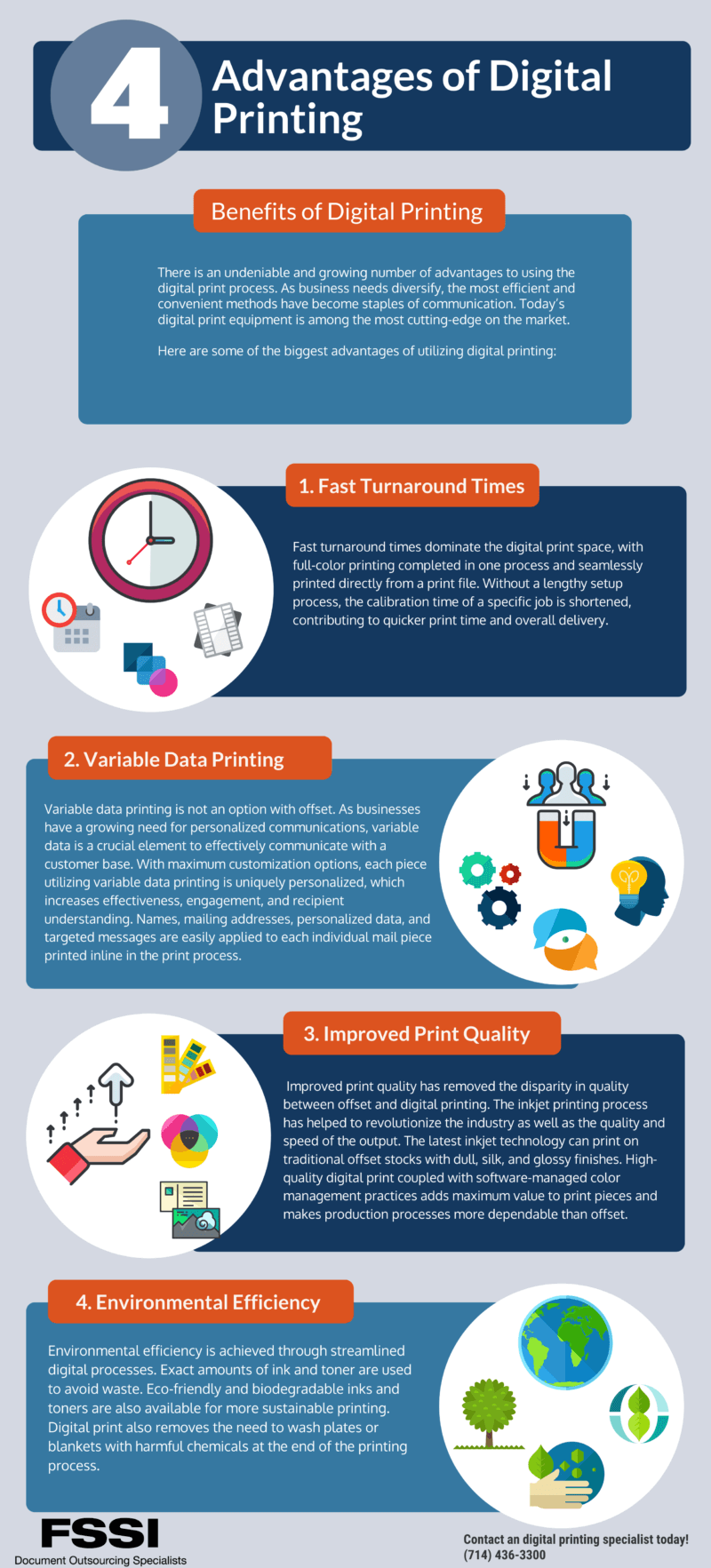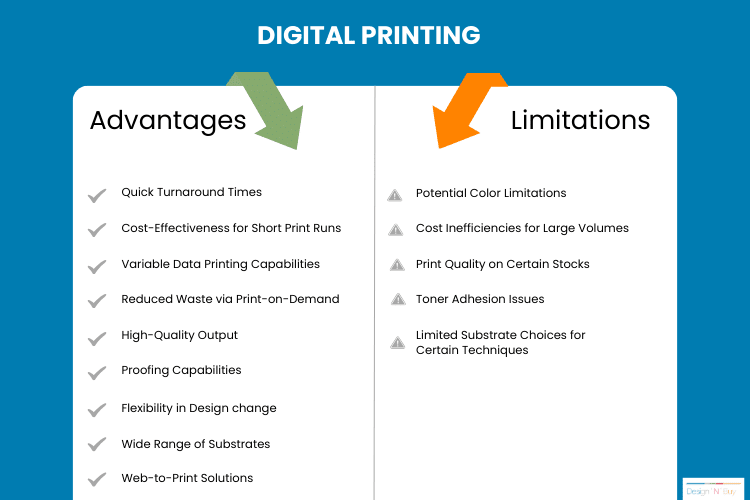Our Digital Printing PDFs
Table of ContentsThe 7-Minute Rule for Digital PrintingHow Digital Printing can Save You Time, Stress, and Money.Some Ideas on Digital Printing You Should KnowThe Only Guide for Digital PrintingSee This Report on Digital PrintingSome Known Incorrect Statements About Digital Printing
Variable data printing, such as straight mail with personalized codes and addresses, is preferably suited for electronic printing. Digital quick printing just requires 4 steps of layout, review, printing and binding to get everything done. Digital quick printing has an unequaled benefit: print on need.According to PMMI, digital printing permits brands and suppliers to respond quickly to customer needs while improving the supply chain, reducing warehousing price and waste, and enjoying faster time to market. That all audios great, but exactly how does this innovation do all that? The major differentiator of these modern technologies is that there are no set-up charges and no plates with electronic printing.
How Digital Printing can Save You Time, Stress, and Money.
According to Wikipedia, the best difference between electronic printing and typical methods such as lithography, flexography, gravure, or letterpress - Digital Printing is that there is no requirement to change printing plates in digital printing, whereas in these analog printing methods home plates are repeatedly changed. This causes quicker turnaround time and lowers expense when utilizing digital printing.
Fast manufacturing implies obtaining your product to market faster. It also implies it's simpler and faster to make adjustments later on, when you alter a dish, add a SKU, or develop seasonal product packaging. Digital printing is highly flexible, so it's easy to make adjustments to the plan design swiftly. It all returns to home plates.
Extra stock can imply even more waste later on. With traditional printing methods, short-run printing is just not possible. Because a great design can make or break your product, electronic printing constantly creates top quality, clear and vivid graphics each time. Digital printing on versatile pouches adds the bright, dynamic, and specific graphics that virtually bid consumers to get to out and touch them.
Digital printing is the procedure of printing digital-based pictures straight onto a selection of media substratums. There is no demand for a printing plate, unlike with countered printing. Digital documents such as PDFs or desktop computer publishing files can be sent directly to the electronic printing press to publish theoretically, picture paper, canvas, material, synthetics, cardstock and various other substratums.
Getting My Digital Printing To Work
According to PMMI, digital printing enables Resources brands and suppliers to respond quickly to client needs while enhancing the supply chain, minimizing warehousing price and waste, and taking pleasure in faster time to market. That all sounds terrific, yet how does this technology do all that? The significant differentiator of these innovations is that there are no set-up charges and no plates with electronic printing.
This results in quicker turn-around time and decreases cost when using digital printing.

10 Simple Techniques For Digital Printing
Much more stock can mean even more waste later on. With conventional printing methods, short-run printing is just not feasible. Because a wonderful style can make or damage your product, electronic printing regularly creates top notch, clear and colorful graphics each time. Digital printing on adaptable pouches includes the bright, lively, and precise graphics that practically beckon consumers to connect and touch them.

According to PMMI, digital printing enables brand names and this post suppliers to respond quickly to consumer demands while improving the supply chain, decreasing warehousing cost and waste, and taking pleasure in faster time to market. That all sounds great, but exactly how does this innovation do all that? The major differentiator of these modern technologies is that there are no set-up costs and no plates with electronic printing.
Not known Incorrect Statements About Digital Printing
According to Wikipedia, the best difference between digital printing and traditional techniques such as lithography, flexography, gravure, or letterpress is that there is no demand to replace printing plates in electronic printing, whereas in these analog printing techniques the plates are repetitively replaced. This causes quicker turn-around time and decreases expense when using digital printing.
Digital printing is highly flexible, so it's easy to make changes to the plan style quickly. It all goes back to the plates.

Getting The Digital Printing To Work
Digital printing is the procedure of printing digital-based pictures directly onto a range of media substratums. There is no demand for a printing plate, unlike with balanced out printing. Digital files such as PDFs or desktop computer posting data can be sent out straight to the electronic printing press to print theoretically, photo paper, canvas, material, synthetics, cardstock and other substrates.